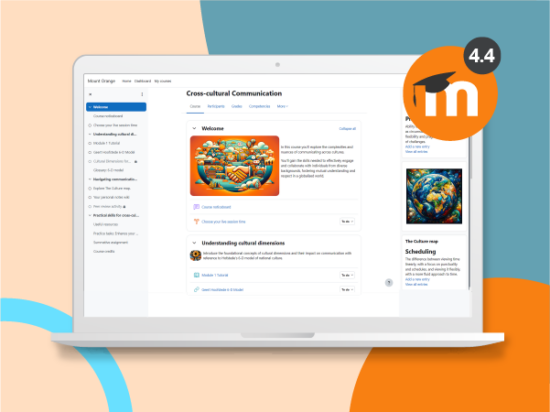A recent survey revealed that 95% of employees in an organisation prefer a gamified work and training experience, as they find aspects of gamification enjoyable. This trend is mirrored by job seekers, where 78% of them stated that gamification could play a significant role in making a company or a particular role more appealing to them during the recruitment process.
The impact of gamification goes beyond employees’ personal preference, as it significantly contributes to productivity and on-the-job engagement. In addition to immediate performance benefits, incorporating gamification into learning and development (L&D) programs results in increased engagement among learners, ensuring their commitment to completing the training program.
In this article, we will explore how gamification can enhance your L&D programs in both education and the workplace and contribute to improved retention and learner engagement. We will also briefly examine the differences between gamification, serious gaming, and game-based learning. Although these approaches all involve integrating game elements into non-game contexts in distinct manners, we will mainly focus on gamification in the L&D context.
What is gamification?
Both in education and the workplace, gamification provides enhanced scope for engagement, motivation, and participation from the learners. It goes beyond traditional learning methods, where learners not only discover the theory but also receive hands-on experience in applying those theories. By applying elements of game design and mechanics to non-game contexts, gamification incorporates features like points, rewards, competition, and challenges into non-game environments.
In the educational context, gamification refers to the use of game-like elements, such as earning virtual points for answering questions correctly or completing tasks to advance to the next level. The use of gamification makes it easier for educators to track the progress of learners as it clearly demonstrates their abilities and how they are developing as they advance through the course.
Similarly, in the workplace environment, gamification involves applying similar game-inspired elements and mechanics to professional training and development. This can include reward systems and interactive challenges designed to enhance employee engagement, motivation, and skill acquisition within a corporate learning environment.
Gamification v/s serious gaming and game-based training
To really understand gamification, we need to look at similar concepts, such as serious gaming and game-based learning, and explain the differences among them. The distinction is important because these terms are often used interchangeably, leading to potential confusion, but they represent distinct approaches to integrating game elements into non-game contexts. Understanding the differences among these concepts empowers educators, L&D managers, and professionals to make informed decisions specifically about gamification, ensuring more effective and tailored learning experiences that align with their goals and contexts.
Gamification, serious gaming, and game-based training are distinct concepts that fall under the broader umbrella of integrating game elements into non-game contexts.
The primary aim of gamification is to enhance engagement and motivation, making training more enjoyable and encouraging participation. Gamification does not involve the use of complete games but rather utilises specific elements to achieve certain goals, whether in education or the workplace. For example, gamification includes awarding virtual badges or points for completing assignments and promoting a sense of accomplishment and motivation among students.
On the other hand, serious gaming involves the use of entire games designed for a specific educational or training purpose. Unlike gamification, serious gaming employs the totality of a game to achieve a particular learning objective. For example, it might simulate real-world scenarios, allowing users to apply practical skills within a virtual environment. This approach often provides a more immersive learning experience, using the intrinsic mechanics of the game to convey educational content in a meaningful way.
Game-based training falls between gamification and serious gaming, focusing on integrating game elements within a training program without necessarily using a complete game. The emphasis is on applying game mechanics to specific training modules or courses rather than employing an entire game. Let’s say, in a sales training context, a game-based module could immerse learners in a virtual marketplace. Through interactive scenarios, they make decisions on client interactions, negotiate deals, and manage leads. Points are awarded for successful sales strategies, creating an engaging and competitive learning environment.
How gamification benefits education and workplace learning
Just as matches or tournaments are meant to provide players with elements of fun and engagement, integrating gamification into your L&D programs introduces a dimension of friendly competition. This kind of interactive participation ensures that learners maintain a high level of motivation throughout the program. In addition to this, gamification brings several benefits to your ongoing L&D strategy.
Increased knowledge retention
One of the primary goals of L&D programs is to ensure that learners retain the knowledge long after they have completed the program. Learners typically forget 90% of the material within a month. However, revisiting the material at regular intervals improves retention, whether through classroom presentations, online engagement tools, electronic communication, or testing.
Gamification is an effective way to enhance knowledge retention over a long period of time. By implementing reward systems, such as points, badges, or incentives, gamified courses motivate individuals to engage with the material, encouraging them to accumulate more rewards consistently. The concept of spaced repetition, where memory retention is optimised by strategically reinforcing information at regular intervals over time, can be seamlessly integrated into gamification. This method involves using interactive quizzes, challenges, or activities to prompt learners to revisit and reinforce critical concepts at specific intervals.
Optimised progress tracking
The visualisation of progress, facilitated by gamification elements like progress bars or level indicators, provides learners with a tangible representation of their journey through the course. The ability to track progress visually motivates them to review content regularly for steady improvement.
Also, the interactive and varied nature of gamified content contributes to sustained engagement, as learners encounter new challenges and scenarios during each interaction. Incorporating friendly competition, social interaction, and immediate feedback further enhances the appeal of revisiting course material, fostering a dynamic and supportive learning environment that extends the period of effective knowledge retention.
Engaging learning methods
Gamification offers a dynamic and interactive approach that makes learning more interesting and interactive. By adding game-like elements such as challenges, points, and rewards, learning becomes like a play where learners actively get involved.
One key benefit is the immediate feedback that learners get. They can see the results of their actions right away, helping them understand and adjust their approach. Also, the variety of activities and challenges within gamified learning methods ensures a diverse experience. Learners encounter new scenarios and problem-solving tasks during each interaction, preventing monotony and promoting a more comprehensive understanding of the training material.
How can you apply gamification to your L&D program?
Applying gamification to your L&D program can be a seamless and effective process through the right kind of learning management system (LMS). Both Moodle LMS and Moodle Workplace, for instance, have capabilities for integrating gamification, allowing organisations to harness its benefits within a structured and adaptable learning platform.
Moodle LMS is a highly flexible platform that allows for easy customisation with gamification elements. Its foundation on social constructivist pedagogy makes it an ideal choice for implementing gamification, which aligns with learner-centric principles. The platform comes equipped with standard gamification features, such as badges, leaderboards, conditional release, and H5P for interactive content.
When extending these principles to Moodle Workplace, the gamification potential expands to the organisational level. Moodle Workplace, built on the feature-rich foundation of Moodle LMS, provides additional tools and features tailored for workplace learning. The gamification elements seamlessly integrate into the corporate training environment, allowing organisations to motivate employees, track progress, and foster a collaborative learning culture.
Beyond the core features of Moodle LMS and Moodle Workplace, L&D managers can access gamification features through several plugins available, including Level Up XP, Game, Quizventure, Stash, Motrain, and Block Game, which can help you bring elements of gamification to your Moodle courses.
Conclusion
Incorporating gamification into your L&D programs is a strategic decision that can significantly enhance the learning experience in your educational institution or organisation. Utilising Moodle LMS and Moodle Workplace provides a flexible platform rooted in learner-centric principles, allowing for seamless integration of gamification elements. The expertise of Moodle Certified Partners and Service Providers ensures that you receive tailored assistance, maintaining a high standard of customer service and technical capability throughout the implementation of gamification within your platform. This collaboration ensures not only compliance with Moodle’s rigorous standards but also the ability to customise gamification elements for a dynamic and effective learning environment.
If you want to deepen your understanding of gamification, Moodle Academy offers a free Introduction to Gamification course, which covers the theory, setup, and practical applications of gamification in Moodle.



